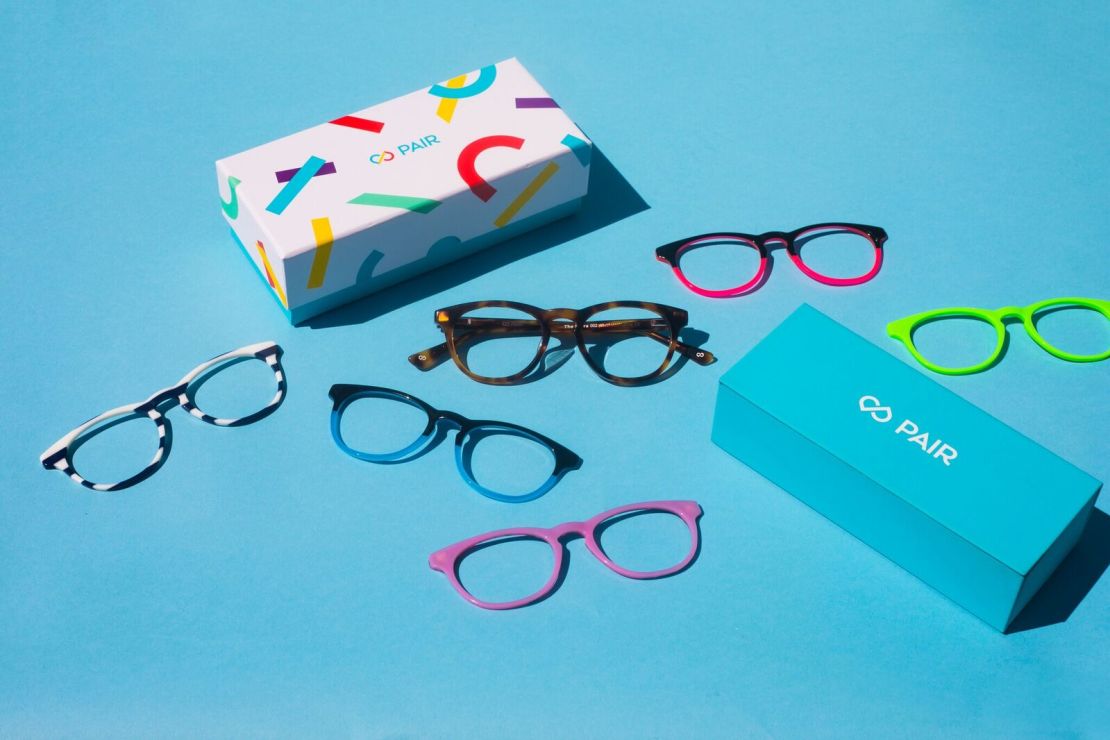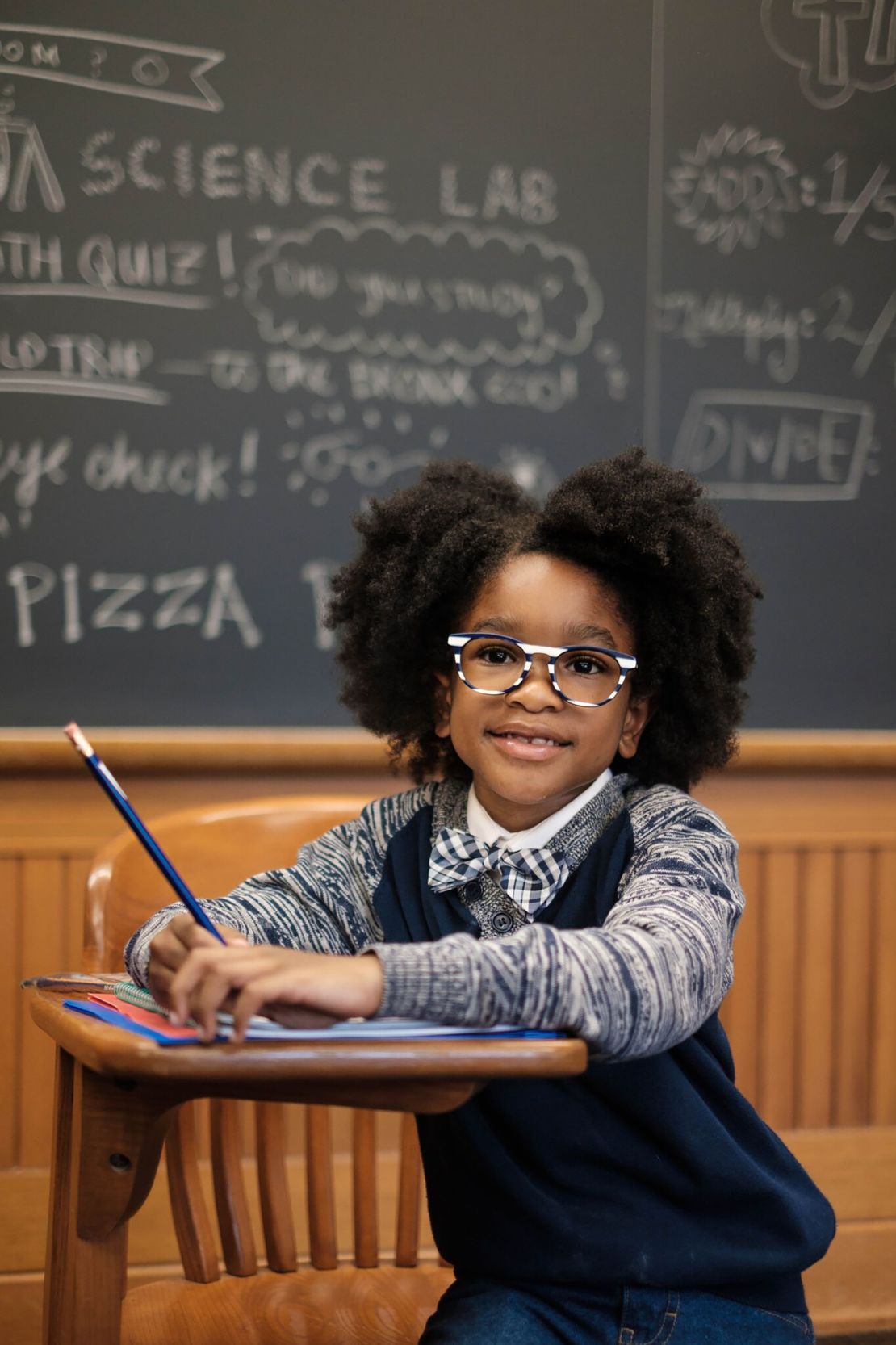At eight years old, Nathan Kondamuri got his first pair of prescription glasses and he was mortified.
“I was in third grade and the first kid in my class to wear glasses,” recalls Kondamuri, who is now 24. His embarrassment was compounded by the frames he wore: “They were boring. Like a medical device. Just a plain black metal frame.”
He would often take them off at school, even though he needed them to see clearly. “Other kids made fun of my glasses,” he said. “I was a confident kid before, but those glasses affected me.”

Once he got older, Kondamuri found he had far more options. Not only did eyewear stores offer a much larger selection of frames for adults, but online players like Warby Parker and Coastal had begun popping up.
For kids, however, the choices were still limited.
“Everything else that kids wear, like their clothes and sneakers, they can customize to match their personality. They can even change colors on their braces. Why can’t kids have the same option to wear their glasses as a fashion statement?” he said.
That became even clearer when Kondamuri’s mother called him at college one day distraught because his eight-year-old brother was unhappy with the pair of glasses she had bought him.
“I realized my brother and I would have the same awful experience because no real innovation had happened in the market for kids’ glasses in all this time,” he said.
So Kondamuri teamed up with Sophia Edelstein, a friend and fellow student at Stanford University, to tackle the problem.
What they came up with were customizable prescription glasses for kids that come in a variety of styles and colors. They called their new venture Pair Eyewear.
‘No one had asked kids to describe their ideal pair of glasses’
Launched in 2017, the New York-based startup sells five different styles of frames, each of which are available in three different colors. Kids can then choose among 10 top frames that snap on magnetically and change the look of the glasses.
Kondamuri and Edelstein conducted months of research and product testing before bringing the glasses to market. “We went to Apple stores and American Girl stores, among other places, and interviewed parents and kids,” said Edelstein.
What jumped out to them most: “It was as if no one before had asked kids to describe their ideal pair of glasses,” said Kondamuri. “They were very imaginative, asking for polka dots, stripes, super hero designs.”

They also learned that kids hated the process of getting measured for glasses at an optical store, describing it as “stressful and boring.”
“We used the feedback to develop a fun product for kids and a better glasses shopping experience overall,” Kondamuri said.
Customers seeking to try out frames enter a couple of pieces of information on the company’s website, such as their age and gender, and then receive a customized home try-on kit with five base frames and 10 different snap-on frames. They can then select which frames fit best, send in their eyeglass prescription and return their kit with a prepaid shipping label. The new frames are shipped in less than a week, said Kondamuri.
The base frames cost $95 and each snap-on frame is $24.95. With each sale, Pair Eyewear donates money toward a pair of glasses to a child in need through the nonprofit The EYElliance.
Getting the word out
To get Pair Eyewear off the ground, Kondamuri and Edelstein raised an initial $150,000 from family and friends. The company has since raised another $1 million from investors.
“I know as a kid what it felt like to find out I had to wear glasses. There was nothing fun about them. It was the end of fun,” said Charles Hudson, managing partner withPrecursor Ventures, one of Pair Eyewear’s early investors. “If you can build a product that kids enjoy wearing and they feel it reflects their personality, it can change how they feel about glasses.”
In the first two months, the brand logged $15,000 in sales.

“Our marketing was very grassroots. We used social media and bloggers to get the word out,” said Kondamuri.
Then, in March 2018, came an unexpected break when Pair Eye was featured in Oprah Magazine. Sales started to pick up. By the end of 2018, the New-York-based company had logged roughly $50,000 in sales.
The company isn’t profitable yet, but Kondamuri and Edelstein plan to grow the business quickly by investing more aggressively inmarketing this year.
While the company faces competition from legacy eyewear brands like Luxottica and online players like Zenni Optical, Warby Parker and Jonas Paul Eyewear, Kondamuri said he isn’t too concerned.
“We have seen that by building a brand and innovative product that really resonates with kids and parents, we have a huge opportunity to be the go-to brand for kids and a unique product that will be very difficult to replicate,” he said.
Part of the payoff is hearing from their young customers.
“One young boy wrote to us that he felt like a superhero wearing his new glasses,” said Edelstein. “Another young girl was being bullied in her previous school then wore her new glasses to her new school. The parents told us the glasses became a conversation starter for her and helped her make friends.”







